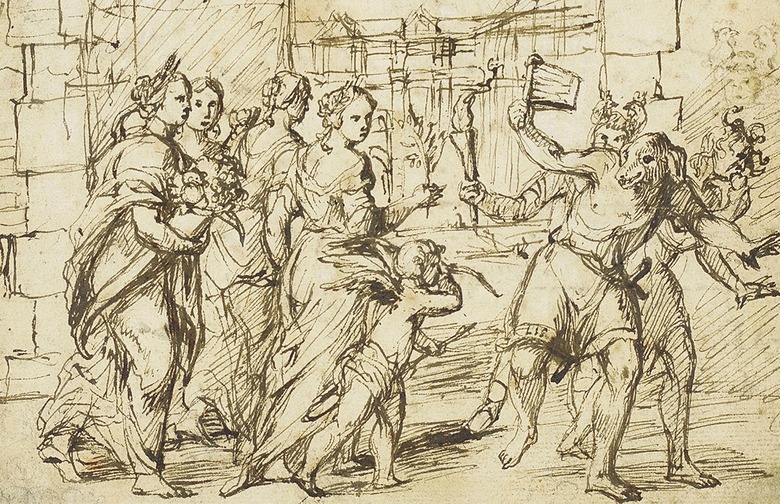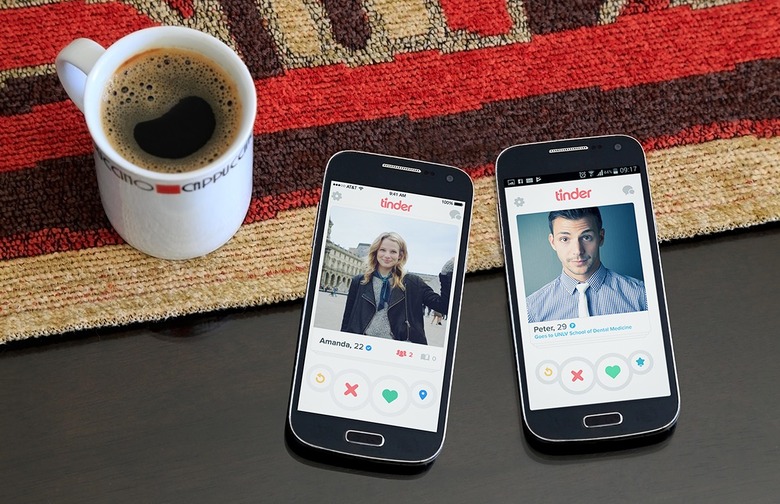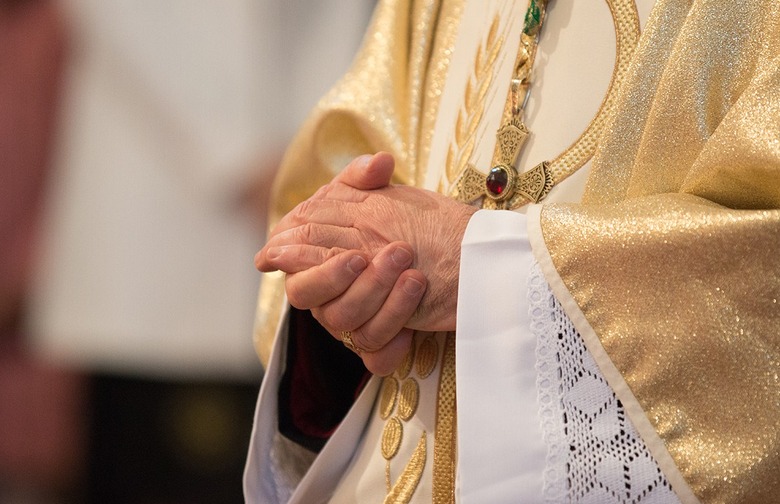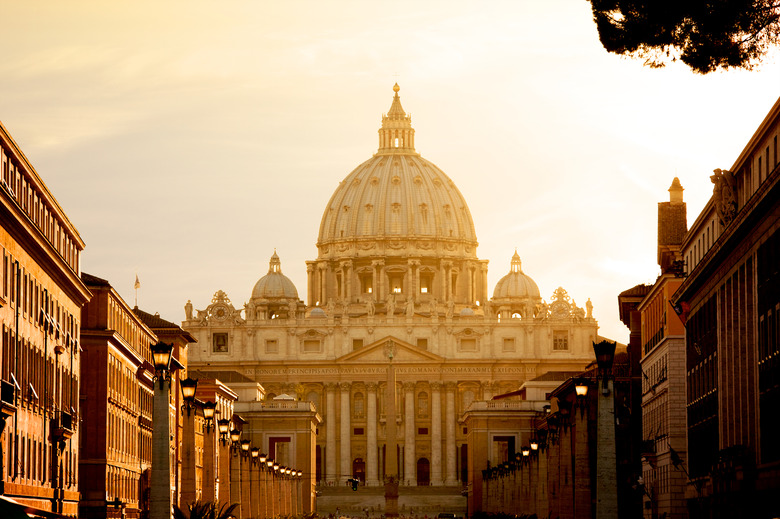14 Facts About Valentine's Day That Will Break Your Heart
Over-priced prix fixes, obligatory flower arrangements and cloying red ensembles are all hallmarks of the original "Hallmark Holiday": Valentine's Day. Maybe we're being a bit cynical, but Valentine's Day promotes a false and often unrealistic concept of love and romance while simultaneously reminding those of us who aren't in a committed relationship that we are hopelessly alone. But it's not all bad, right? Well...
Valentine's Day comes off as disjointed and insincere because... it is. The holiday's bizarre traditions are likely the product of some misinterpreted historical traditions and a clever plot executed by America's oldest and largest manufacturer of greeting cards. And if that sounds shocking, then you won't believe these 14 heartbreaking facts about Valentine's Day.
It’s based on a pagan ritual…
Every February, the ancient Romans celebrated the feast of Lupercalia, a festival designed to purify the city and promote wellness and fertility. Like any proper spiritual purging in the ancient world, the festival called for the sacrifice of a goat and a dog, two animals celebrated for their strong sexual instinct.
…That involved whipping
During Lupercalia, the animal sacrifices would be skinned and their hides fashioned into whips. Young women would line up for the lashings because participating in the ritual was supposed to help them become more fruitful.
...And possibly a ‘love lottery’
Today, we have our own version of a "love lottery" — it's called Tinder. But the Romans had their own way of artificially fostering romance. Although there's debate as to the exact details of the practice, some sources mention that during the festival of Lupercalia young women would write their names on slips of paper, which would then be drawn at random by young men. The two would then be "paired" for the remainder of the evening.
It’s likely named after two decapitated priests
In the third century A.D., Christianity was not widely accepted (or tolerated). As such, Christian history of the time is light on details and heavy on martyrdom. Several martyrs named Valentinus are mentioned in various sources, and legends of their deeds abound. One Valentinus, a Roman priest, managed to convert a wealthy aristocrat to Christianity after he cured the man's daughter of blindness. After learning of the miracle, Emperor Claudius Gothicus had the family executed and the priest decapitated. A similar tale is told about another Valentinus, who, after debating a convert and subsequently healing his son, suffered the same fate — a beheading at the orders of the emperor. Regardless of the details, by the end of the fifth century, Christians had begun commemorating St. Valentine on February 14.
The Vatican doesn’t consider it an important day
Pope Galesius made the feast of St. Valentine official in 496, but after the Second Vatican Council in 1969, Pope Paul VI removed it from the calendar of major holidays, largely because very little about the actual St. Valentine could be verified. Anglicans and Lutherans still recognize February 14 as an official feast day, and the Eastern Orthodox Church celebrates St. Valentine on July 6.
It was never about love
Based on its origin story, February 14 was a time for celebrating fertility and fruitfulness, not romance. Valentine's Day became associated with romantic love during the High Middle Ages and Renaissance, when writers like Shakespeare and Chaucer romanticized the holiday in literature.
It’s the original ‘Hallmark Holiday’
In 1913, Hallmark Cards, a privately-owned American corporation, started producing valentines, and in doing so, pioneered an industry that blends the human desire to acknowledge and appreciate people important to us with exploitative consumerist tactics. Today, the term "Hallmark Holiday" is used to describe holidays that exists solely for commercial purposes. However, it's important to point out that, contrary to popular belief, Hallmark is not responsible for "inventing" Valentine's Day.
It promotes senseless consumerism
According to the National Retail Survey, in 2018 the average person spent an estimated $144 for Valentine's Day on candy, flowers, apparel and more — up from $137 the previous year. In total, people spend around $20 billion a year on Valentine's Day-related activities and gifts.
It’s a bad night to dine out
Valentine's Day is probably the worst night you can go out to eat. Why? After Mother's Day, Valentine's Day is the busiest restaurant day of the year. Between overpriced food, unhappy waitstaff and rushed service, you're better off cooking a romantic dinner at home.
Cupid, the Valentine’s Day mascot, is a naughty winged baby
Cupid, the Roman god of love and desire, is rarely seen without his bow and arrow. However, the iconic image of an arrow-pierced heart has some lascivious undertones, representing the coming together of male and female reproductive organs. Keep this in mind when shopping for the perfect Valentine's Day gift.
It ruins relationships…
Valentine's Day makes us reexamine our relationships, and if one or both partners are unsatisfied, the idea of celebrating love becomes intolerable. Data from Facebook shows that updates with the phrases "breakup" and "broken up" spike immediately after Valentine's Day. Curious about where you stand with your significant other? Book a V-Day reservation at White Castle and see how they react. True love will reveal itself.
And promotes traditional gender roles…
Retailers and advertisers use gender stereotypes to suggest how men and women should behave on Valentine's Day and other romantic holidays. Women are often depicted as concerned and overly enthusiastic, while men are shown as being aloof and unconcerned. It's 2019, get with the program.
…While still breaking hearts
Broken Heart Syndrome, also known as takotsubo cardiomyopathy, is recognized by the Mayo Clinic as a real, although temporary, condition said to mimic the feeling of a heart attack.
People don’t really celebrate anymore
Yes, Valentine's Day may seem like it's everywhere, but about half of people don't participate in any aspect of the holiday. According to the National Retail Foundation, only about 50 percent of people intend to celebrate Valentine's Day. Their reasons for opting out include not having anyone to celebrate with and finding the whole holiday to be too commercialized. But whether or not you celebrate V-Day, we can all agree these candies are pretty darn good.
More From The Daily Meal:
Best Valentine's Day Dinner Deals at 20 Chain Restaurants
15 Dating Etiquette Mistakes to Avoid This Valentine's Day
How to Have a Good Time on Valentine's Day Even If You're Single














